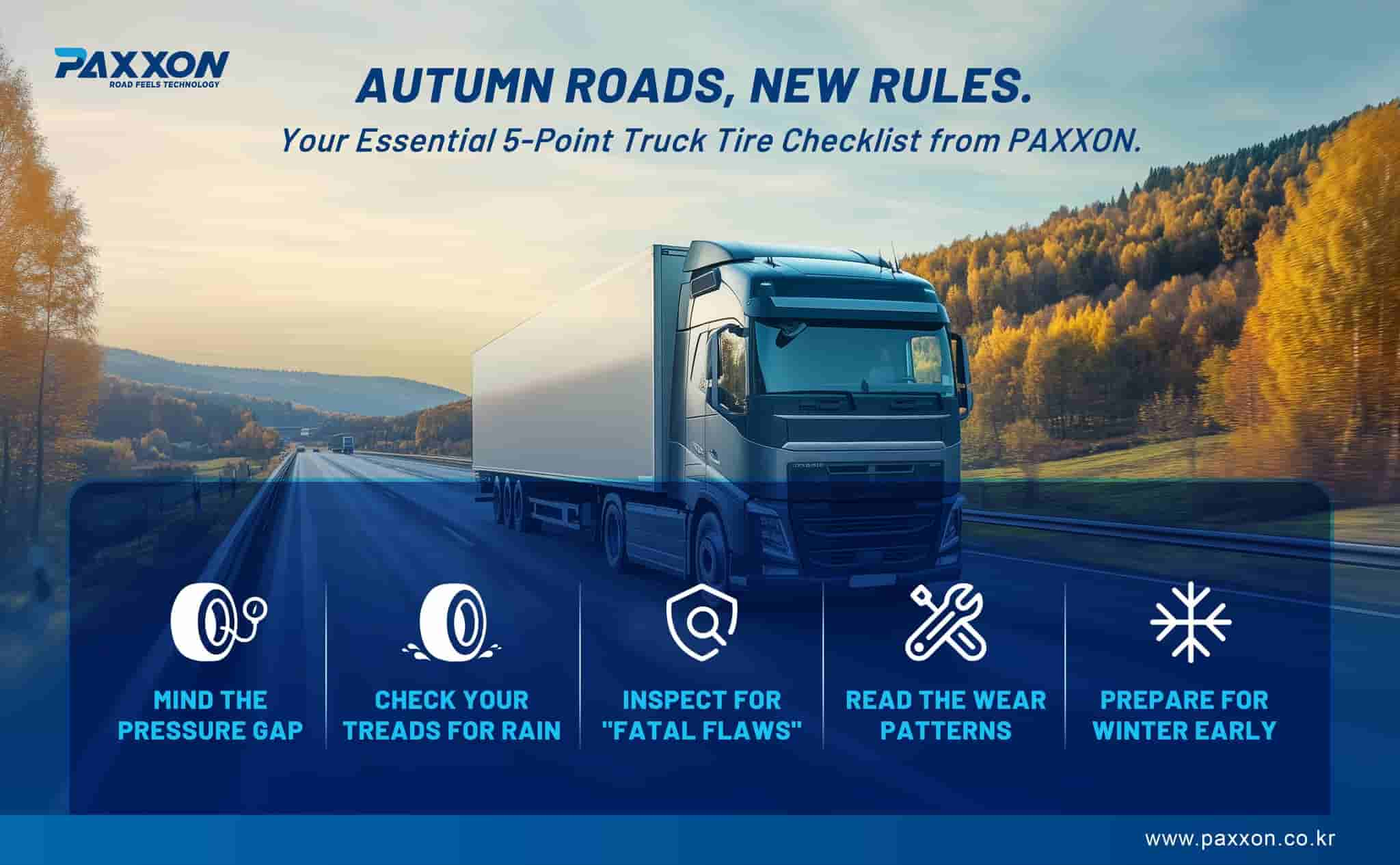Prensa
As temperatures drop and day-to-night differences grow larger, autumn becomes a critical season for tire maintenance. For fleet operators and truck drivers, proper tire care not only minimizes accident risks but also extends tire life and reduces operating costs. PAXXON has summarized five key autumn tire maintenance tips for you:
1. Monitor Tire Pressure and Adjust with Temperature
Autumn weather is unstable, with frequent fluctuations and significant day-night temperature differences. According to the principle of “thermal expansion and contraction,” tire pressure decreases as temperatures drop. Low tire pressure is the number one hidden hazard, leading to excessive shoulder wear, higher fuel consumption, overheating, and an increased risk of blowouts.
Recommendation: Check all tires (including the spare) at least once a week when cold, and recheck or adjust pressure promptly after sudden temperature drops.
2. Inspect Tread Depth – Stay Above the Safety Line
Rain is common in autumn, making roads slippery and grip more critical. The main function of tread is water evacuation; shallow tread increases the risk of hydroplaning, longer braking distances, and even loss of control.
Recommendation: Watch for the “TWI” wear indicator inside tread grooves. Tires must be replaced once tread depth reaches 1.8mm. For safer operation, plan for replacement when tread depth falls below 3–4mm.
3. Full Inspection – Eliminate Hidden Damage
As temperatures fall, rubber becomes more brittle. Minor damage accumulated in summer may worsen in autumn, sometimes leading to sudden tire failure.
Recommendation: Carefully inspect tread and sidewalls for nails, cuts, cracks, or bulges. A bulge indicates broken cords, and the tire must be replaced immediately.
4. Monitor Wear Patterns – Detect Chassis Issues
Tire wear patterns reveal vehicle chassis health. Misalignment or imbalance often causes abnormal wear, which not only shortens tire life but also affects vehicle stability.
Recommendation: Look out for irregular wear such as one-sided wear, feathering, or crown wear. If detected, perform wheel alignment and balancing before fitting new tires.
5. Prepare Early for Winter Conditions
Autumn is the transition into winter. For trucks operating in colder regions, preparation is crucial. Standard tires harden in low temperatures, losing grip and becoming unsafe on icy or snowy roads.
Recommendation: If operating in areas where temperatures often fall below 7°C, switch to winter tires in advance. Winter tires use special rubber compounds and tread designs to remain flexible in severe cold and provide excellent traction on snow and ice. Also, ensure the spare tire is properly inflated and in good condition—it may be your only lifeline in remote, cold areas.

